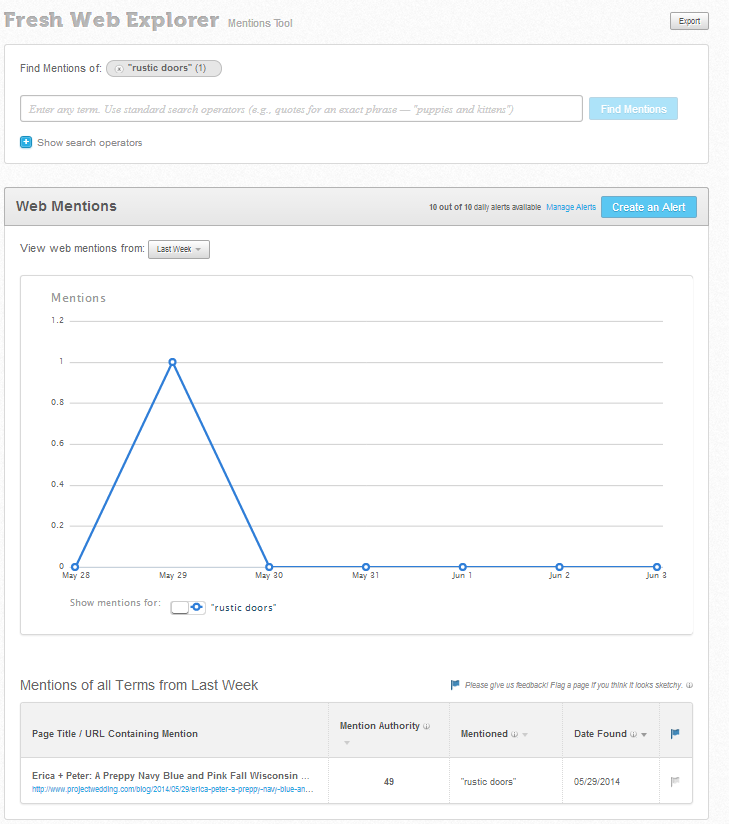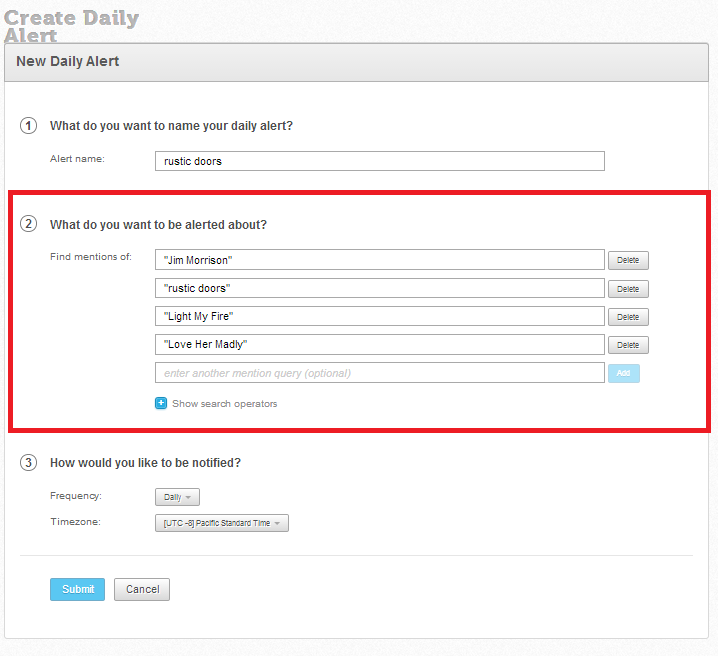The start of any link building campaign can be pretty rough. In a link building utopia, links would just start flittering in the second your hands were in close proximity of a keyboard.
As anyone with a healthy amount of experience will tell you, link building is rarely a utopia, certainly not to the extreme that I just laid out. The links aren’t necessarily going to come quick-and-easy out of the gate. Indeed in some cases, quick-and-easy links are links that you don’t want. Think linkfarms, article directories, any domain that was set up with the end goal of gaming Google in mind.
The links that you really, really want aren’t going to be quick wins in your backlink profile; those links typically take time, effort and careful consideration.
Having said all that, there are link building methods that can help you build solid and relevant links just shortly after the proverbial starting pistol has been fired. Andrew Dennis wrote about quick wins with image link building in the last edition of Tutorial Tuesday.

That is certainly an effective way to build some solid links, and fairly quickly. I’m here to talk about another one: fresh mentions.
Fresh Mentions
Fresh mention links are some of my favorite links to build, if for no other reason than they are among the easiest. More appropriately, the least difficult.
A fresh mention link is a link that’s pretty close to being built for you; it’s a house with everything but the door.
Let’s say someone mentions your brand on their blog. For the purpose of this scenario, I’ll use the fictional site rusticdoors.com. A decorating blog might say the following by pure happenstance:
Of course, if you really want to give your house guests that old country living feel, you have to start right from the get-go. Get a door to match the inside of your house. If there’s a Rustic Doors shop in your neck of the woods, go scope out their fine selection of simple, old wood doors.
Rustic Doors has been mentioned, but without a link. Fresh mention link building would dictate that the webmaster and/or SEOs for Rustic Doors reach out to this blog and ask that they link to rusticdoors.com with the brand name mention. This is both beneficial to Rustic Doors and to users who will want to learn more.
But how could Rustic Doors know who is writing about them and when? Well they certainly wouldn’t want to employ a person to scour every single home decoration blog every day and read every single piece of content to find a mention. That’s highly implausible.
Fresh Web Explorer
Not surprisingly, there are much simpler and time-efficient methods for tracking fresh mention opportunities. Also not surprisingly, marketing maven Moz provides such a tool. It’s called Fresh Web Explorer, and it comes with a paid subscription to Moz.
Fresh Web Explorer tracks all brand mentions and opens up a slew of linking opportunities. It’s not vastly different from Google Alerts. The two major differences I’ve come across:
- Google Alerts is free, whereas Fresh Web Explorer requires a paid subscription
- Fresh Web Explorer returns results immediately after a manual search
You may immediately think to yourself, “Well if they both serve a similar function, why wouldn’t I go with the free option?” Understandable. I would suggest here that a paid subscription to Moz not only offers up access to FWE, but many other awesome and helpful tools as well (Rank Tracker, On-Page Grader, etc.)
Google Alerts will send you an email notification when someone online publishes your brand name/keyword. That’s all well-and-good, but there’s no retroactive function attached.
Web Mentions
With FWE, all one needs to do is type in the word they want to find mentions for and it will return all mentions from the last four weeks.
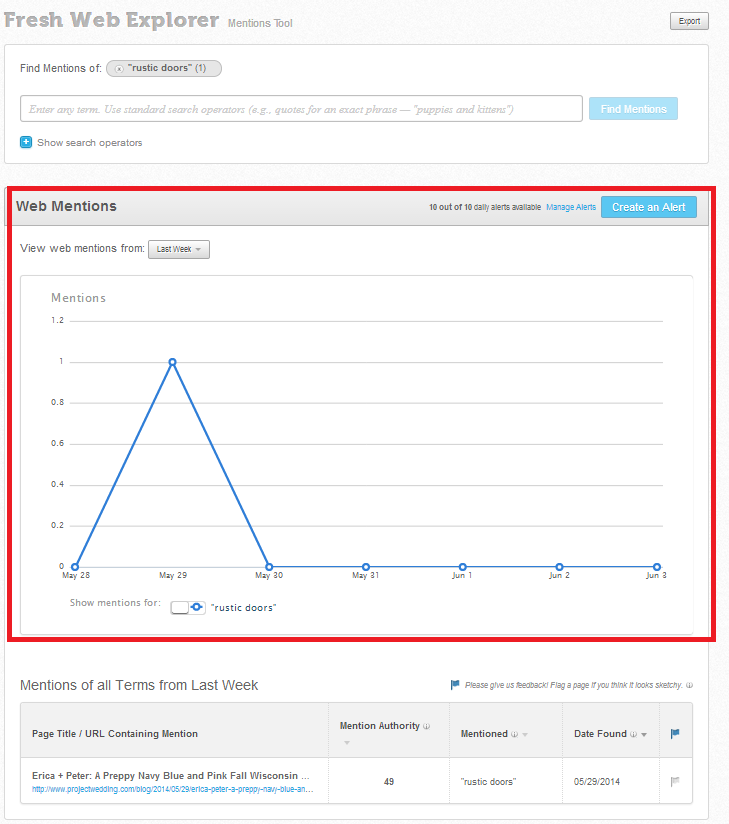
This is a graph that shows every mention of the term “rustic doors” over the span of a week. On May 27, there was only one mention. Maybe there were more during the three weeks prior. We can find out by clicking on the dropdown menu right above the graph.
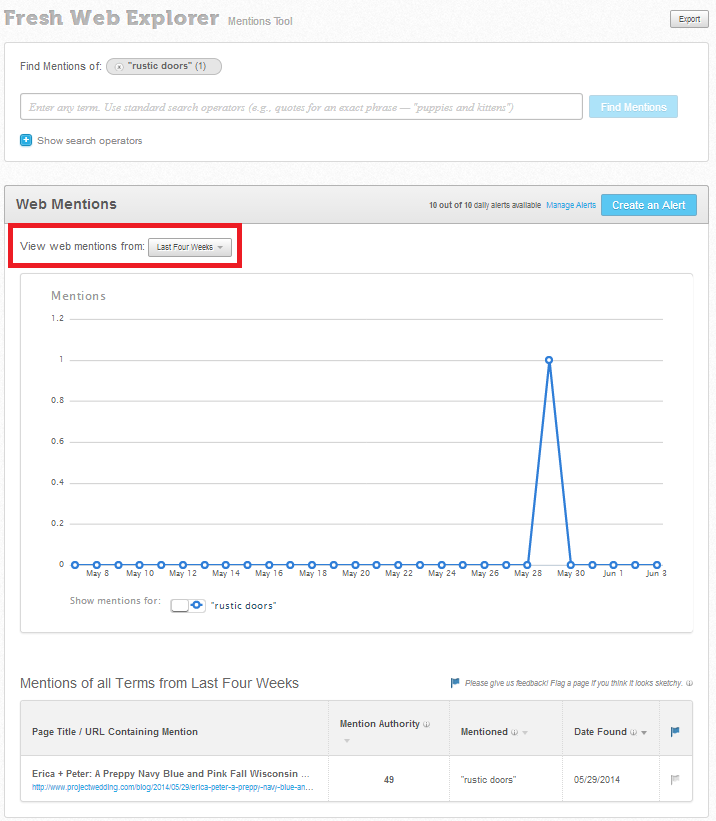
Of course, these results are skewed because Rustic Doors is not an actual chain, but it appears no one is really talking about rustic doors online. If it were a real site, Rusticdoors.com may want to research into using different keywords, but that’s an entirely different Tutorial Tuesday.
So what kind of door is the internet talking about?
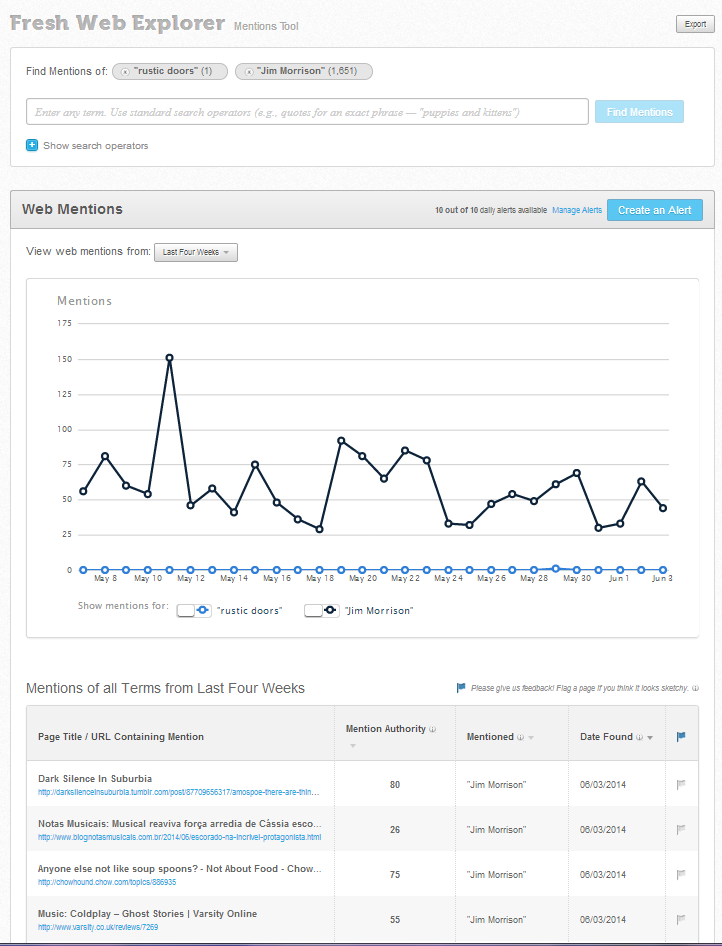
Users mention legendary Doors frontman Jim Morrison over rustic doors by a ratio of 1,628:1. I wouldn’t want it any other way truthfully.
How to Sort Through Mentions
Underneath the graph, FWE will list every mention of both terms they’ve found over that last four weeks.
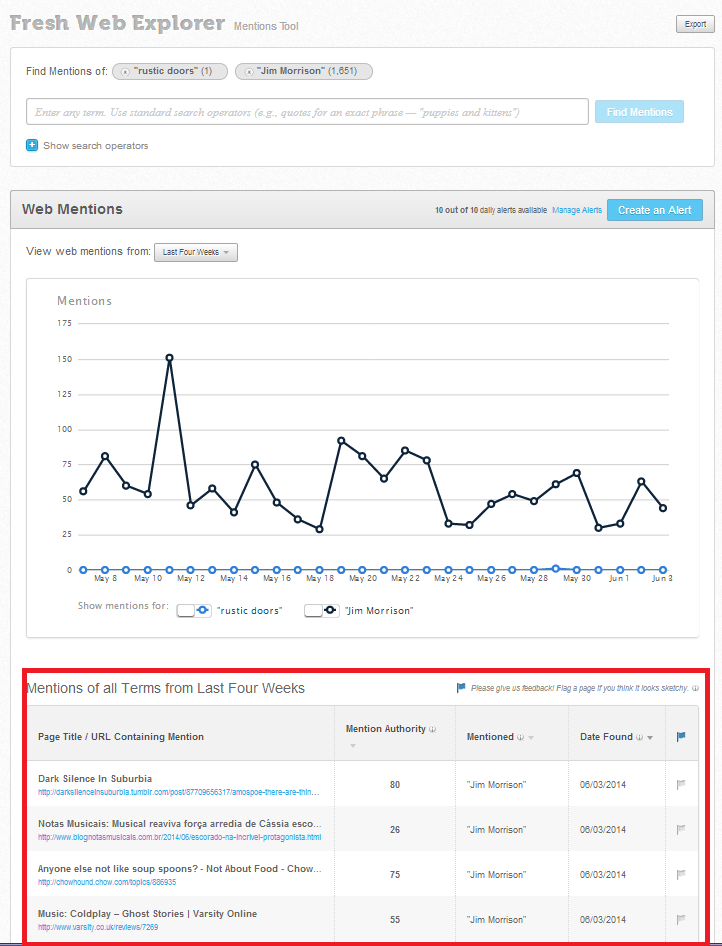
The first column takes you to the page. The second column represents Mention Authority. This is a 1-100 scale of how much trust Moz puts to this page, using factors similar to search engine ranking signals.
You’ll notice that the third column is a repetitive list of Jim Morrison (and one rustic doors entry for good measure).
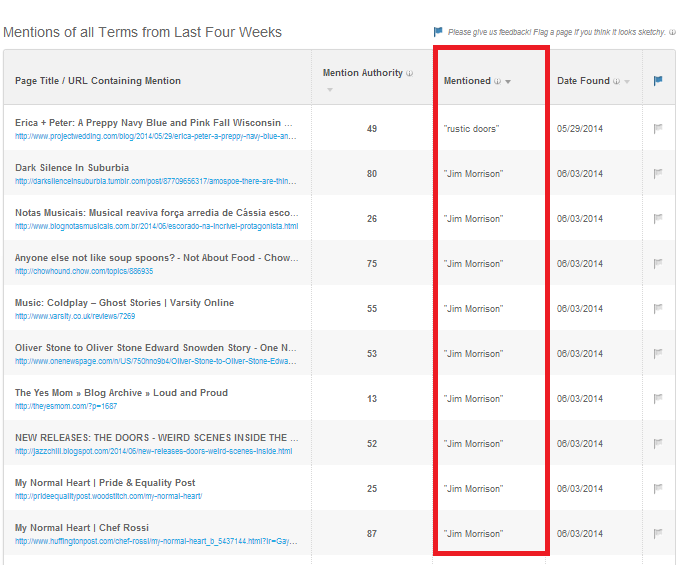
FWE allows you to track multiple mentions at the same time, and they’re even kind enough to show you how to do so.
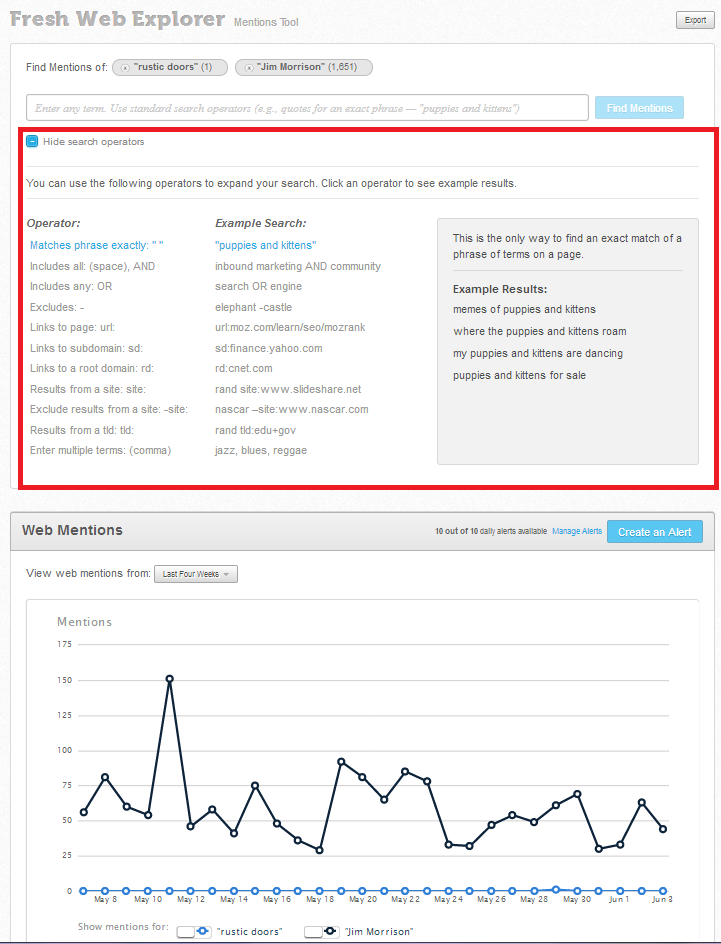
The search I did was the bottom search, a comma to indicate that I wanted pages that mentioned Jim Morrison and/or rustic doors.
The fourth column simply indicates the date the mention was found.
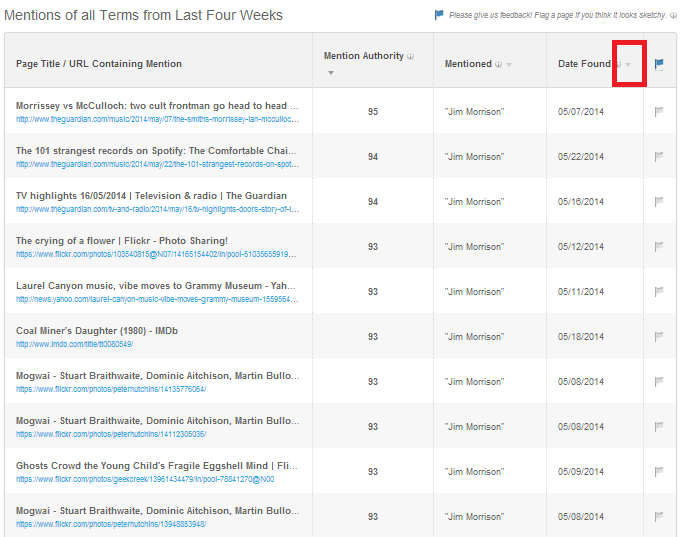
The dates are out of order because I currently have the table sorted by mention authority. You can sort by date by clicking on the highlighted arrow at the top.
The fifth column is a flag function to alert Moz of spam.
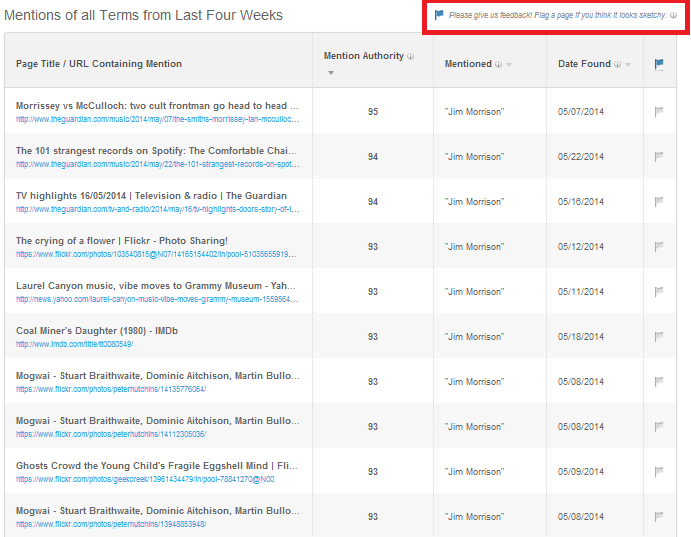
I wouldn’t even want to begin to know what is “sketchy” even by Jim Morrison standards.
Now What?
Once a list of the mentions that are worth following up on has been compiled, this is when the SEOs of rusticdoors.com would reach out to the webmasters of all of those respsective sites. The key is to be courteous and appreciate of the brand mention, and letting the webmaster know that a link pointing back to rusticdoors.com would be valuable for that webmaster’s readers.
Create Alerts
With Fresh Web Explorer, not only can you search for mentions from the previous 28 days, but you can set up alerts to keep you posted on all incoming mentions.
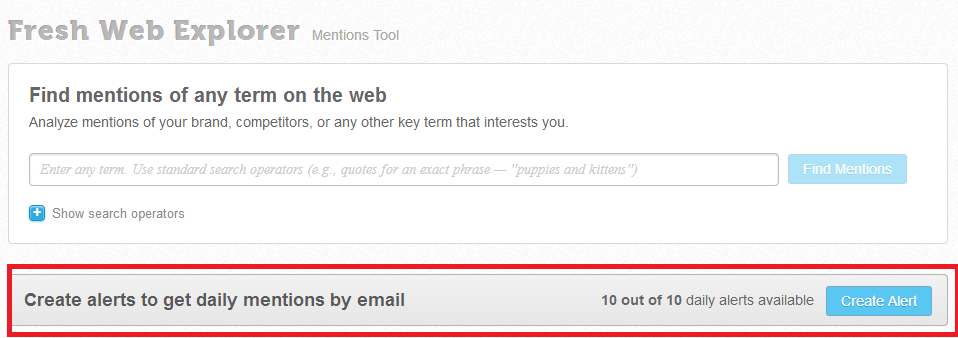
Clicking on “create alert” will lead you to this page:
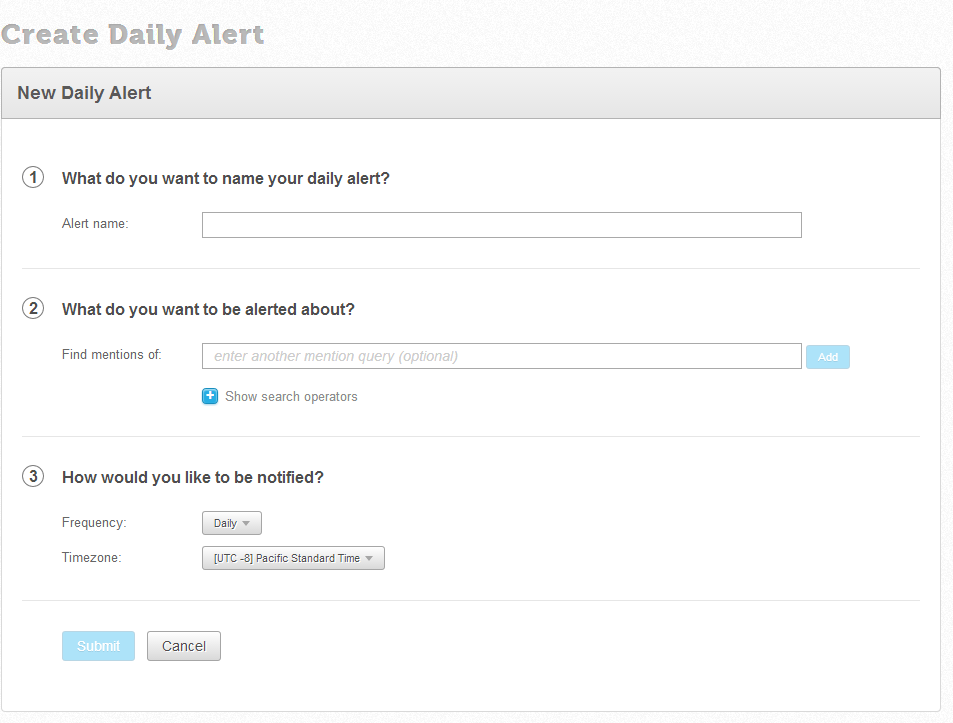
Section 1 is the place for you to label your alert. It is not the mention you would like to track (although it could be if you like). That spot is reserved for section 2.
You can track up to five mentions. Clicking the add button on the right will let you add those options. Be sure to use the same search operators like you would use for the historical mention tracker.
Section 3 allows you to indicate to Moz how often and when you would like to be notified of incoming mentions.
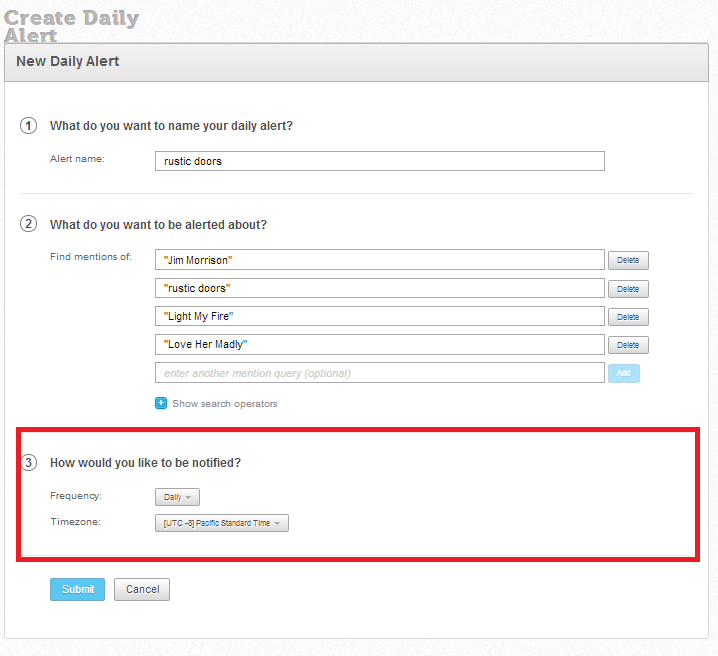
Fresh Web Explorer is an easy-to-use tracking device that I highly recommend. Sure it costs whereas Google Alerts does not, but Fresh Web produces better results in my experience. Plus, the other services that Moz throws your way make up for the cost. Even if you just decide to use it weekly, it will be worth the time and effort to find potential fresh mention goldmines.

